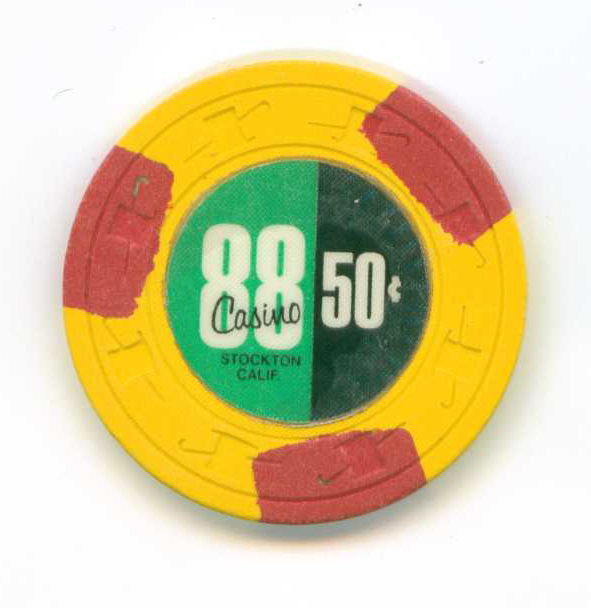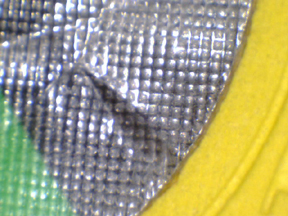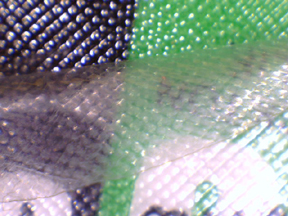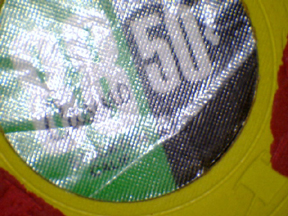|
|
|
Knowing that this chip had an "issue" I went ahead and acquired it through a trade because I thought it might be interesting, and it proved to be just that!
I was told that while the chip looks OK in a scan, the inlay appeared "wrinkled". Well, after receiving it, sure enough, the inlay had a wrinkled looked.
Under a magnifying glass it was apparent that the inlay had a thin, plastic film that was lifting nearly all the way around it's outer edge. If you look at the scan below, focusing on the black background of the denomination. The center area is black, while towards the outer edge, there is a white cloudyness. Where it is black, the thin, clear film is still adhered to the inlay, and where it is cloudy, it is detached from the inlay. When placed on the scanner, it is pressed into place and looks fine. But otherwise, it is lifted from the inlay and since the film also has the cross-hatching impressed into it, it gives the krinkled, cloudy look to the inlay. Under the thin film, the inlay printing is strong and bright!

Shown here is a detail picture (using a USB digital magnifying device (a Carson zOrb, 35x digital microscope)) where you can see the krinkle effect.

This next detail has the thin film rolled (folded) back to expose the inlay underneath.

In this last picture, the krinkle effect is shown from a different angle.

Both sides of the chip are the same, but one side is more pronounced than the other.
So.... My question is this: Is the thin film intended to stay across the inlay, or is it a part of the manufacturing process and was supposed to have been removed after the chip was popped from the mold?
Thanks for looking!
Jim
|
|